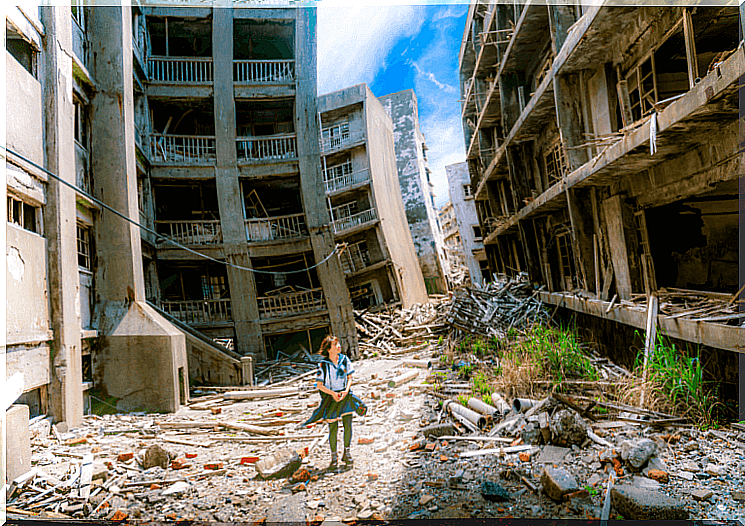Do You Know How Post-traumatic Stress Disorder (PTSD) Is Treated?

We have all heard of post-traumatic stress disorder (PTSD). We know that it is suffered by people who have been exposed to situations in which they have felt they were in great danger. Unexpectedly, something has happened that has affected them considerably.
Rape, robbery, wars, terrorist attacks are some of the examples of events that can trigger PTSD. But it doesn’t just go through man-made situations. Natural disasters, such as hurricanes or earthquakes, can also cause it. The question is: how to treat it?
The first steps in treating PTSD: psychoeducation and breathing
When you suffer from a psychological disorder, the first thing to do is go to a suitable psychologist. Along these lines, for the treatment of post-traumatic stress disorder, cognitive-behavioral intervention is the one that enjoys the greatest acceptance and the one that is most supported by empirical evidence. Therefore, if we want to minimize the risk of making mistakes, it is best to look for a professional who works with interventions typical of this trend.
This therapist will carry out an initial evaluation, vital to understand the problem presented by the patient. Afterwards, it is important that you carry out psychoeducation: you will explain to the patient what is happening to him in terms that he can understand. Here we must emphasize the symptoms suffered by the person, indicating why they appear, what maintains them and how they will be treated.

The objective is for the person to understand as much as possible what is happening to him. In addition, that you understand why and how we are going to try to solve it is essential for you to adhere to the treatment and get it to improve. Once you have understood all this, we will go on to teach you something fundamental, to relax.
If we train the patient in abdominal breathing, we will be giving him a simple and very useful tool that he can put into practice when anxiety appears, so characteristic of the disorder. On the other hand, once the patient has acquired some fluency with the procedure, it is important that it be practiced continuously from the beginning.
How to continue treatment for post-traumatic stress disorder?
Apart from giving tools for the person to put into practice when anxiety rises, it is important to work on other aspects that are there, even if they are not always seen. I’m talking about the thoughts and beliefs associated with the fact that triggered everything. If we don’t address this, the treatment of post-traumatic stress disorder will be incomplete – it will be like putting a band-aid on an open wound.
For this reason, it is important that the patient learns to identify those ideas that appear in his mind and that revolve around the same message: what has happened has been his fault. Or that he won’t be able to get over it. Or that the world is full of dangers and this will happen again. That is, you have to learn to locate automatic thoughts and irrational beliefs when they occur.
With this we will carry out the first step of cognitive restructuring. Later, through Socratic dialogue, all this will be questioned in the consultation. In this way, throughout the sessions the person will learn to break down those ideas that affect the maintenance of the disorder.

Ending Treatment for Post Traumatic Stress Disorder
But, for the treatment of PTSD is complete, you have to add something else. Since these people usually avoid everything related to the situation in which they experienced the danger, it is important to work on the exhibition, both in imagination and live.
With this we will get them to lower their anxiety level by getting used to the situation. In addition, they will learn that remembering the episode does not mean that they have to re-experience it, just as they will not necessarily lose control again. On the other hand, it will make a difference between the traumatic event and others associated with it, but which are not dangerous.
Also in consultation, the idea that we have worked on in therapy will be reinforced: what has happened to him has been something concrete and specific, not a probable or frequent general event. Lastly, it will increase your sense of self-control, as well as see yourself as more capable of handling the situation.
Finally, as with all anxiety problems, it is important to include relapse prevention in the treatment of PTSD. This last step is critical, as it will help build progress and provide the patient with a sense of empowerment. In this way and following the scientific method, we will have achieved that the person retakes the reins of his life.
Images courtesy of Ian Espinosa, Ander Burdain, and Jordy Meow.









